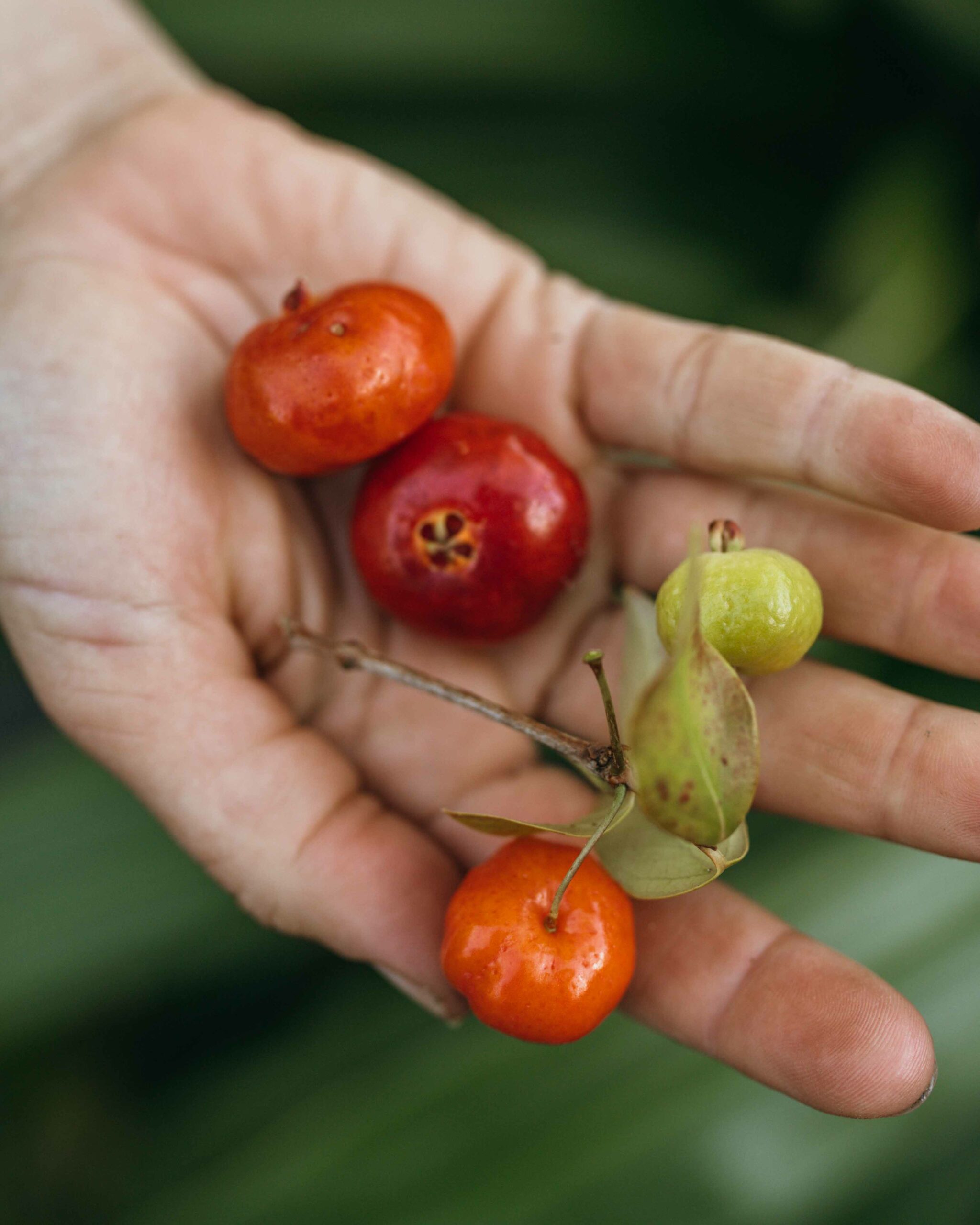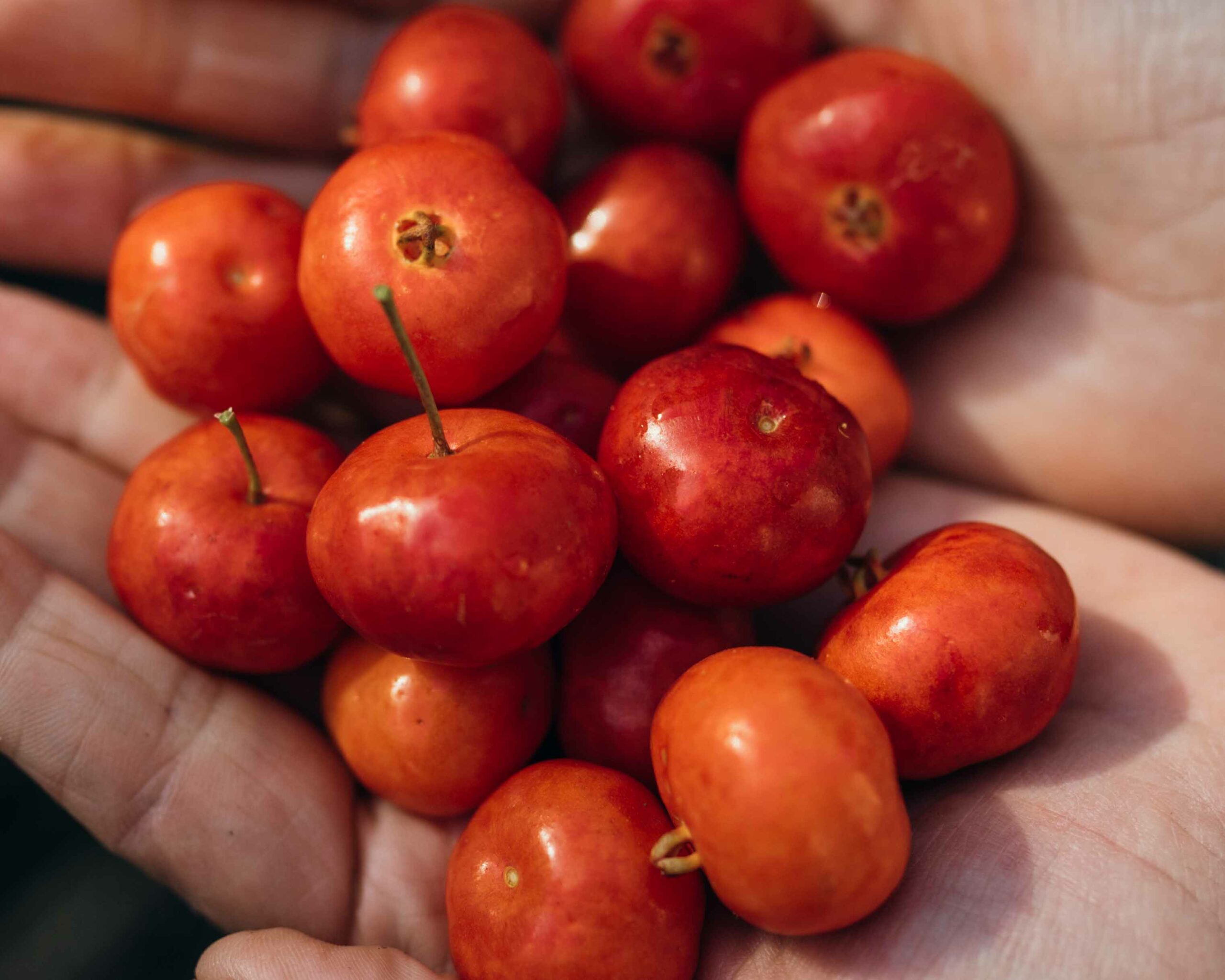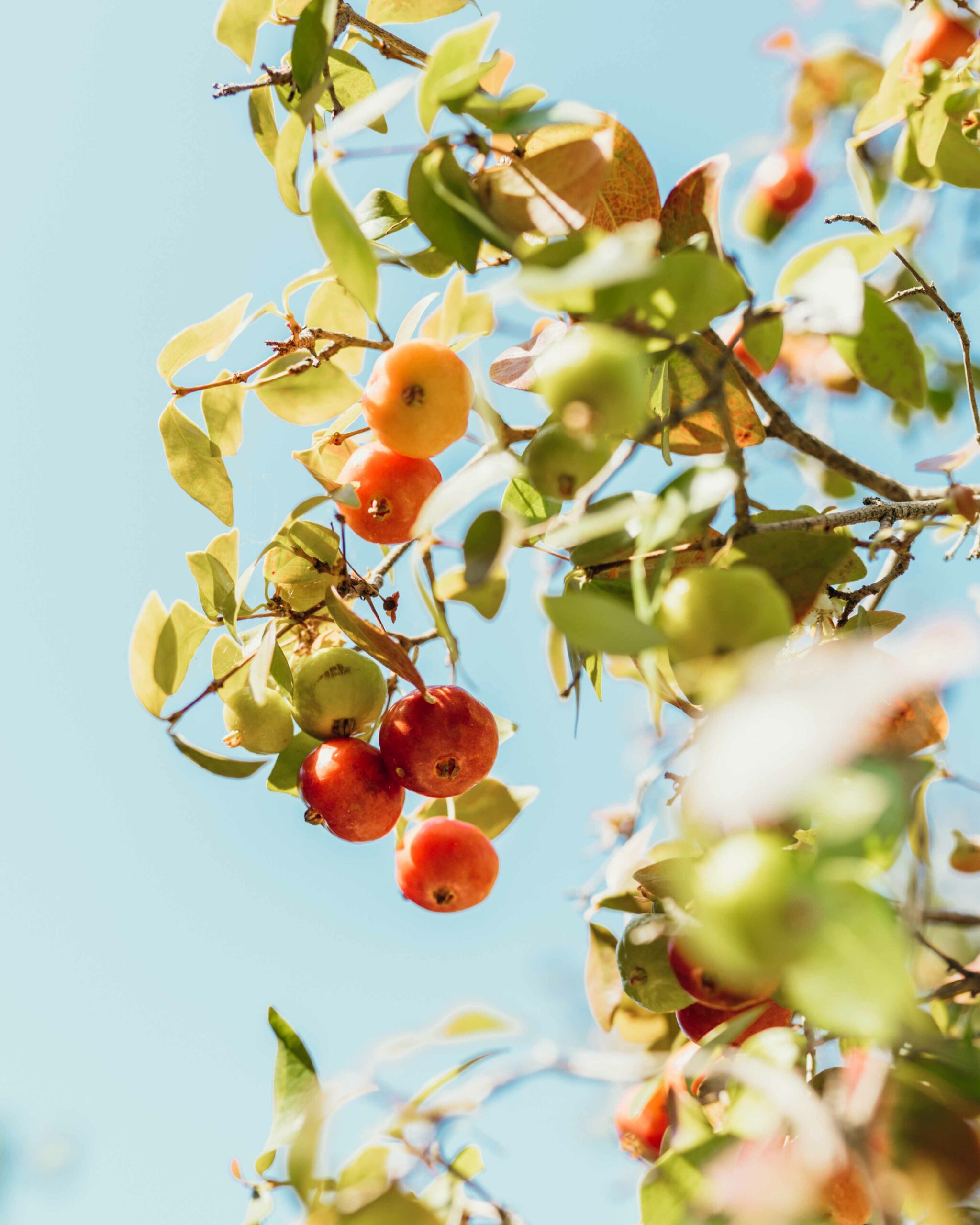Eugenia uniflora
Surinamikirsche, Pitanga, Kirschmyrte
Englische Bezeichnung: Pitanga, Suriname Cherry, Brazilian cherry, Cayenne cherry
Spanische Bezeichnung: Ñangapiry, Capulí, Pitanga, Cereza de Cayena
Familie
Myrtengewächse (Myrtaceae)
Hauptbestandteile:
Mineralstoffe: Kalium, Magnesium, Calcium
Vitamine: B-Vitamine, C, Beta – Carotin (Provitamin A)
Sekundäre Pflanzenstoffe: Antioxidantien (Quercitin, Flavonoide…)
Ernte-Hinweise:
Reif sind die Früchte, wenn sie rot gefärbt sind.
Verwendung:
-
Frucht: Obstsalat, Smoothies,…
Der Geschmack der Suriam-Kirsche reicht je nach Sorte und Reifegrad von süß bis sauer, mit einer dezenten Schärfe. Im Allgemeinen gilt: Je dunkler die Frucht, desto süßer ist sie. Sie ist eine sehr gute Quelle für Vitamin C.
Family
Myrtle family (Myrtaceae)
Main components:
Minerals: potassium, magnesium, calcium
Vitamins: B vitamins, C, beta – carotene (provitamin A).
Secondary plant substances: antioxidants (quercitin, flavonoids…)
Harvesting guideline
The fruits are ripe when they are red in colour.
Use:
-
Fruit: fruit salad, smoothies,…
The taste of the Suriam cherry ranges from sweet to sour, with a subtle sharpness, depending on the variety and degree of ripeness. In general, the darker the fruit, the sweeter it is. It is a very good source of vitamin C.
Familia
Familia de los mirtos (Myrtaceae)
Componentes principales:
Minerales: potasio, magnesio, calcio
Vitaminas: Vitaminas B, C, beta – caroteno (provitamina A).
Sustancias vegetales secundarias: antioxidantes (quercitina, flavonoides…)
Guía de cosecha
Los frutos están maduros cuando son de color rojo.
Uso:
-
Fruta: macedonia, batidos,…
El sabor de la cereza Suriam oscila entre dulce y ácido, con un sutil toque picante, según la variedad y el grado de madurez. En general, cuanto más oscura es la fruta, más dulce es. Es una muy buena fuente de vitamina C.









































